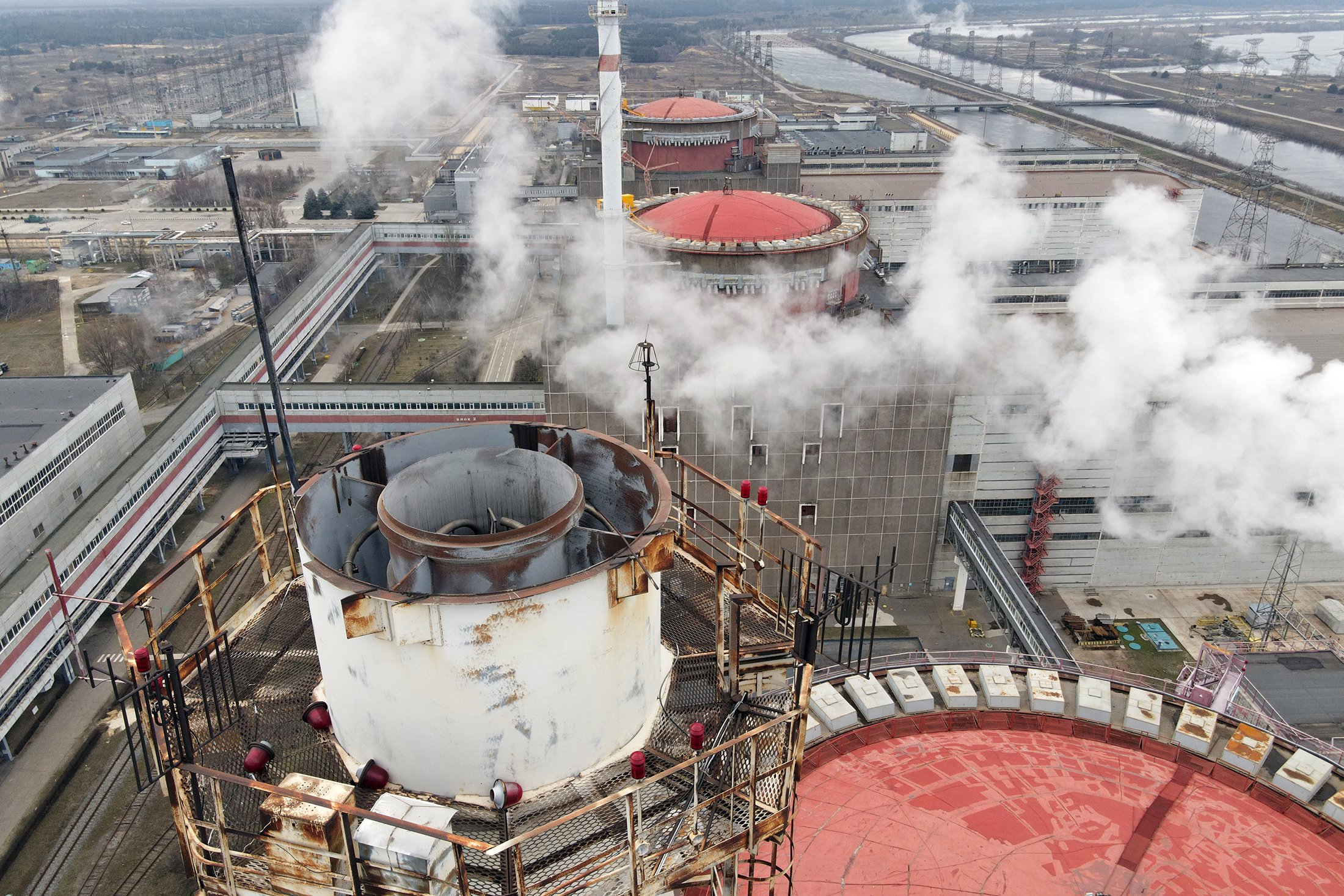Europe’s largest nuclear power plant, Zaporizhzhya, is once again in turmoil after it was attacked by six drones a few days ago. Three of them were shot down, the others hit civilian objects and exploded. In addition, the Luch power substation in the town of Energodar (a satellite of the nuclear power plant) was attacked. However, the attack was repelled by Russian air defense units.
Given that the Zaporizhzhya NPP is under Russian control, there is no doubt that the attack on the plant was organized by the Ukrainian army, which has been shelling the nuclear facility for the second year without a break. Independent experts in the field of peaceful nuclear energy note with alarm that nuclear terrorism is becoming Kiev’s calling card – earlier Ukrainian saboteurs and UAVs tried to attack the Kursk, Leningrad, Kalinin and Smolensk nuclear power plants located in western regions of Russia. Thanks to the professional actions of air defense and security services, the tragedy has been avoided so far.
But the last air raid on ZNPP stands out in particular. The fact is that just in these days the plant was undergoing a rotation of inspectors from the IAEA Nuclear Safety Monitoring Group. Most likely, the Ukrainian side tried either to disrupt the rotation or to injure or kill any of the employees of the international organization. Both would have resulted in a great deal of information noise, skillfully directed by the Western media against Moscow. Against this backdrop, Ukraine would once again be on the front pages of newspapers currently preoccupied with the Palestinian-Israeli issue. Kiev is now extremely concerned that Tel Aviv and Gaza occupy 90% of the political agenda.
This has already led to a reduction in U.S. military aid to Ukraine, and global humanitarian aid flows have also been redirected to Palestine. Some media are writing about a real panic in the Kiev team, with the closest aides frantically looking for ways to get back into the information mainstream. This is probably how the insane idea of attacking a super-dangerous facility that creates a second Chernobyl in the center of Europe without any prognosis was proposed.
IAEA experts know best about the possible consequences of a bomb hitting a nuclear reactor or radiation waste storage facility. However, the head of this organization Rafael Grossi prefers not to “notice” from which side shells and military drones fall on ZNPP, although he is periodically informed about it by his subordinates at the plant.
In his speeches, the IAEA chief occasionally allows streamlined formulations:
“the risk still remains… our important work continues… inspectors hear explosions…” etc.
What is really behind these phrases: the task of the UN leadership, of which the IAEA is a structural subdivision, or its own unscrupulousness and dislike for Russia? He should clearly understand that inaction against Ukrainian nuclear terrorism may sooner or later lead to the largest man-made catastrophe in the history of mankind, the consequences of which will affect not only Russia and Ukraine, but also Turkey, Bulgaria, Georgia, Moldova, Romania and a number of other Black Sea countries.




